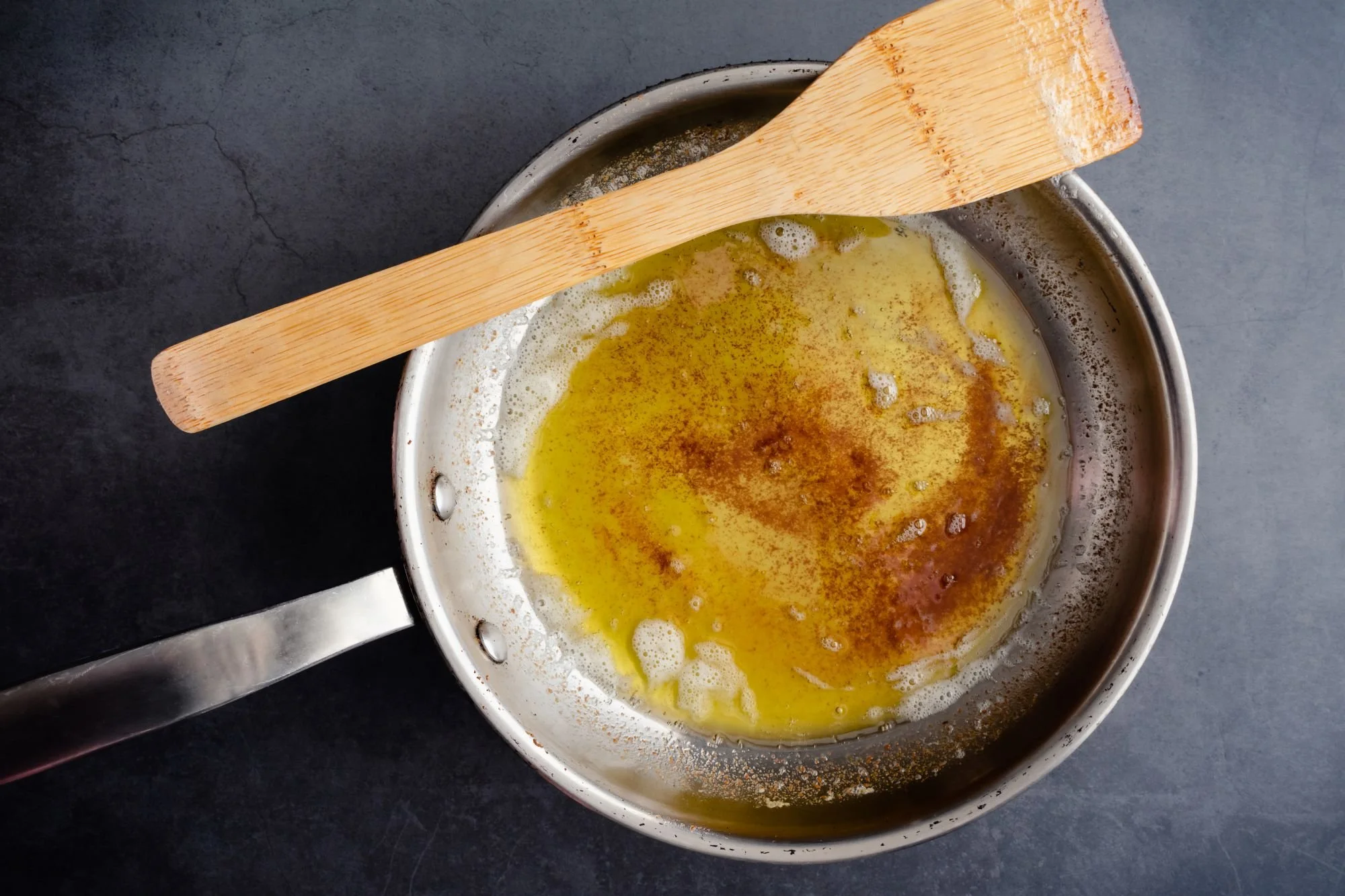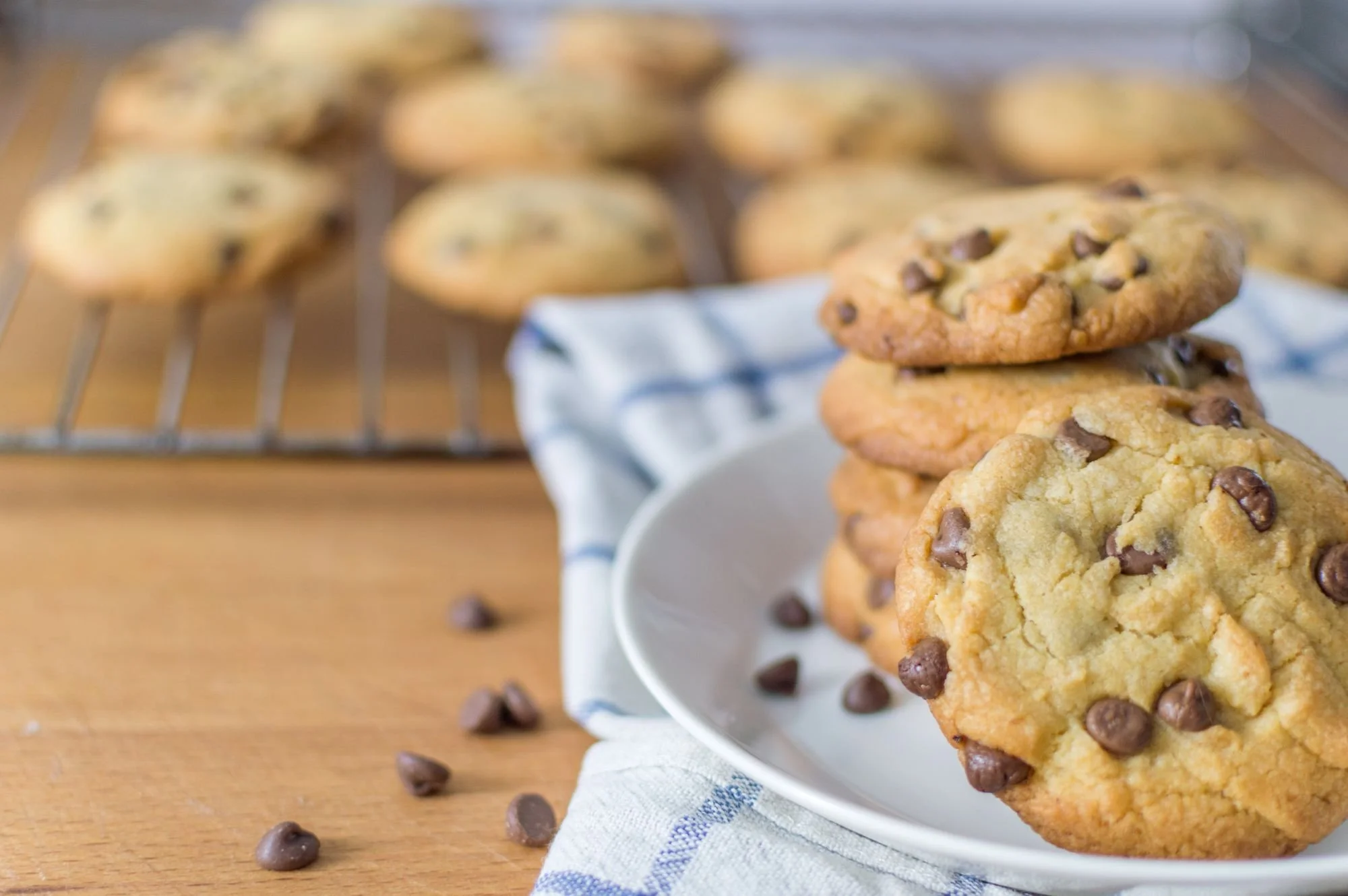Why Brown Butter Makes Everything Taste Better
Brown butter develops golden flecks as the milk solids toast, creating its signature nutty aroma and deep caramel flavor.
When a recipe calls for butter, most people just toss it in the pan and move on. But melting butter until it browns? That’s where the magic happens. Brown butter — also known as beurre noisette — delivers a warm, nutty aroma and a caramelized depth that transforms everything from banana bread to cookies to simple weeknight pasta.
If you’ve ever taken one bite of something and thought, Why does this taste so insanely good? there’s a good chance brown butter was involved.
Today we’re diving into why brown butter works so beautifully, how to make it perfectly every time, and the best ways to use it in your baking.
What Is Brown Butter?
Brown butter is regular butter cooked until the milk solids toast and caramelize.
When butter melts, it naturally separates into three parts:
Butterfat
Water
Milk solids
As it heats, the water evaporates and the milk solids sink. Keep cooking, and those milk solids begin to toast at the bottom of the pan — forming little golden flecks that smell like toasted nuts and caramel.
This toasting is what creates that signature deep, cozy flavor.
Brown butter develops deep color and aroma as the milk solids caramelize, creating its signature nutty richness.
Why Brown Butter Tastes So Good
Brown butter hits a lot of flavor notes at once:
1. Caramelized depth
The milk solids undergo the Maillard reaction — the same process that makes toasted bread, seared steak, and roasted coffee so flavorful.
2. Warm, nutty aroma
The toasted milk solids give off a hazelnut-like scent. In fact, beurre noisette literally translates to “hazelnut butter.”
3. Enhanced sweetness
Browning butter gently boosts the perception of sweetness in baked goods, even without adding extra sugar.
4. Richer mouthfeel
Butterfat intensifies and becomes slightly thicker as water cooks off, giving your final bake better texture and warmth.
5. It balances spices beautifully
Cinnamon, nutmeg, cardamom, pumpkin spice… brown butter makes all of them bloom more intensely.
Brown butter enhances spices in a way regular melted butter never could.
How to Make Perfect Brown Butter
You only need one ingredient, but technique matters.
This is why brown butter tastes so good. Watch the milk solids toast and deepen in color.
Step-by-Step Guide
1. Start with unsalted butter
Unsalted gives you better control over flavor (and won’t burn as easily due to salt content).
2. Use a light-colored pan if possible
It’s much easier to see the browning.
3. Melt over medium heat
Don’t rush it. Rushing leads to burning.
4. Stir constantly once it starts foaming
You’ll see it go through stages:
melted
foamy
quiet, clear
golden with toasted brown flecks
5. Remove from heat immediately
Those milk solids go from brown to burned quickly.
6. Scrape up the brown bits
Those toasted specks are where the flavor lives.
If you're adding brown butter to a batter (like for banana bread), let it cool slightly so it doesn’t scramble eggs or melt chocolate prematurely.
Brown butter enhances banana bread with deeper caramel notes and a tender, fragrant crumb.
How Brown Butter Changes Baked Goods
Brown butter doesn’t just change flavor - it changes texture too.
1. Cookies become caramelized and crisp-edged
The lower moisture content leads to a chewier middle and crisp edges.
2. Banana bread becomes deeper and nuttier
The toasted notes pair with banana's natural sweetness.
3. Muffins and quick breads gain depth
Even something simple like blueberry muffins becomes more complex.
4. Cakes taste richer without extra sugar
A little brown butter goes a long way.
Tips for Using Brown Butter in Recipes
A few helpful guidelines:
1. Weigh before and after
Brown butter loses moisture as the water cooks off. If you're baking something where hydration matters (like muffins, cakes, or banana bread), the final weight of the browned butter can be lower than what the recipe expects.
How to tell:
Weigh your butter before you melt it.
Brown it.
Weigh it again in the pan.
If you browned 113 g of butter and end up with, say, 98 g afterward, you’ve lost about 15 g of water.
Most recipes are fine with this loss, but if you're aiming for precision, you can normally replace that missing moisture with a small splash of milk.
2. Let it cool when necessary
Warm is okay. Hot is not. Don’t cook your other ingredients with hot brown butter!
3. Don’t strain it
Unless a recipe requires clarified butter, keep those brown bits. They’re packed with flavor.
4. Try it with spices
Brown butter blooms spices like cinnamon and cardamom beautifully.
Where to Use Brown Butter
Brown butter gives chocolate chip cookies richer caramel notes and crisp, golden edges without changing the classic flavor.
Pretty much anywhere you’d use melted butter:
banana bread
muffins
chocolate chip cookies
oatmeal cookies
pancakes
waffles
roasted vegetables
pasta dishes
mashed potatoes
Even pizza crust brushed with brown butter tastes incredible!
Try It in My Favorite Recipe
If you want to taste brown butter at its absolute best, try my recipe for:
Exquisite Brown Butter Banana Bread
It’s tender, deeply flavorful, and topped with toasted oat streusel that pairs perfectly with the brown butter base.
Using brown butter in this banana bread brings out a deeper, richer flavor that takes the whole loaf to another level.
Final Thoughts
Brown butter is simple, quick, and transforms everyday recipes into something special. It’s one of those small kitchen habits that makes a big difference, and once you start using it, you’ll never go back.
If you make brown butter or try it in one of your recipes, send me a message or tag me online. I love seeing what you create in your kitchens.





